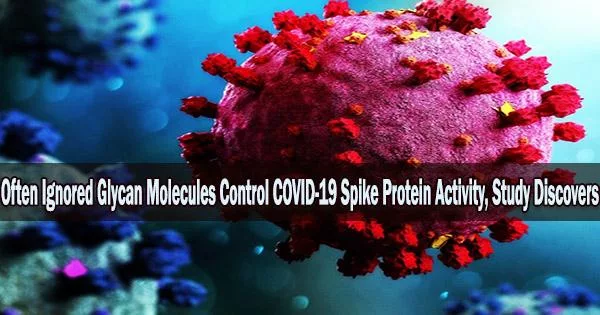The spike protein of the COVID-19 virus is a key part of the virus’s structure and is responsible for its ability to infect host cells. It has a complex structure that includes both protein and carbohydrate components, and the function of the spike protein can be regulated by various factors, including glycans.
You’ve probably heard about viral proteins like the COVID-19 spike protein if you read science news frequently.
Perhaps less well understood is the role of a group of chemicals known as glycans in the structure of viruses. But they are also significant.
Glycans are complex carbohydrates that decorate the surface of viruses, and “every virus has a different distribution of carbohydrates,” says University at Buffalo engineering and medical researcher Sriram Neelamegham. As he explains, HIV uses glycans as a shield, employing these molecules to hide from virus-fighting antibodies. H1N1, a strain of the flu, leverages glycans to enter host cells, he adds.
And now, Neelamegham is among scientists illuminating the role that glycans may play in the function of SARS-CoV-2, the virus that causes COVID-19.
His group’s most recent investigation focused on N-glycans, a subset of glycans that are linked to the SARS-CoV-2 spike protein. The study team discovered that several of these N-glycans, especially those that are connected to the spike protein at the N61 and N801 locations, are probably essential for SARS-CoV-2 function.
The research was published on Sept. 23 in Science Advances. Neelamegham, PhD, UB Distinguished Professor in chemical and biological engineering, biomedical engineering, and medicine, is senior author. Qi Yang, a UB PhD student in chemical and biological engineering, is first author.
Glycomics is a minor field compared to the study of proteins: More researchers are focused on proteins since the main targets of neutralizing antibodies are protein epitopes. But our results show that these glycans are indeed important in terms of viral function in SARS-CoV-2. That’s why we choose to walk down this direction.
Qi Yang
“We discovered that specific N-glycans seem to regulate the development and functional maturation of the SARS-CoV-2 spike protein,” Neelamegham says. “This is important because the spike protein is very important for viral entry into host cells.”
The research involved the use of virus-like particles (VLPs), which are synthetic copies of the SARS-CoV-2 virus. The VLPs employed in the study were created with the express purpose of preventing the development of different N-glycans on the spike protein.
According to the research, changes to N61 and N801 decreased the capacity of VLPs to enter host cells by roughly 75–85%, indicating that these glycans are important vulnerabilities of the viruses.
“While more research is needed to determine the exact reason why this happens, it’s possible that N61 and/or N801 may play a role in helping to fold the spike protein into the proper configuration,” Neelamegham says.
His team looked at the functions of several intracellular carbohydrate-binding “lectins” or “chaperones” that aid in the synthesis of the spike in an effort to comprehend folding mechanics.
These findings demonstrated that the regulation of VLP entry into host cells is mediated by the “chaperone” protein calnexin, which promotes this kind of folding. This is intriguing, according to Neelamegham, because calnexin is known to associate with N-glycans, however it is unclear if it precisely interacts with the glycans at positions N61 and N801 or not.
“The findings highlight N-linked glycans on spike protein as potential drug targets for COVID-19. One next step in the research would be to validate the findings using appropriate animal models,” Neelamegham says.
The study also emphasizes how crucial it is to look into how glycans are involved in other viral infections.
“Glycomics is a minor field compared to the study of proteins: More researchers are focused on proteins since the main targets of neutralizing antibodies are protein epitopes,” Yang says. “But our results show that these glycans are indeed important in terms of viral function in SARS-CoV-2. That’s why we choose to walk down this direction.”
Understanding the role of glycans in regulating the function of the spike protein may provide important insights into the biology of the COVID-19 virus and may help to inform the development of treatments and vaccines for the disease.
Additional authors of the paper include research scientist Anju Kelkar, PhD, and students Anirudh Sriram, Ryoma Hombu and Thomas A. Hughes, all in the UB Department of Chemical and Biological Engineering. Neelamegham is a faculty member in departments within the UB School of Engineering and Applied Sciences; the Jacobs School of Medicine and Biomedical Sciences at UB; the UB Cell, Gene and Tissue Engineering Center; and the UB Clinical and Translational Research Center.
The research was funded by the National Center for Advancing Translational Sciences and National Heart, Lung, and Blood Institute, both part of the National Institutes of Health, and by UB.





